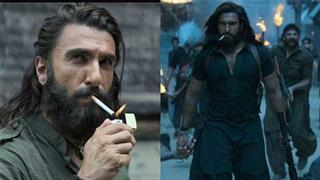From the nuclearisation of South Asia to folk musicians to tribal clashes, diverse stories from real India
are among the 20 non-feature films at the 35th International Film Festival of India (IFFI) here.
Films being showcased in the Indian Panorama section are in Malayalam, Hindi, Hindi-Punjabi, Tamil,
Manipuri and Marathi. Ten films are in English, with one coming as an English-Gujarati mix. One is without
any dialogue.
In an industry that otherwise focuses on entertainment and creating a happy make-believe world, these
stories speak of the stark reality of India, with little of the melodrama, sentimentalism and musical action that
otherwise goes into feature films.
Besides commercial cinema, India has long had a high-minded Indian art cinema (called by film critics as
"New Indian Cinema" or "the Indian New Wave"). In India, it's also called "art films" as opposed to
mainstream commercial cinema.
In a country of a billion people, so many stories are just waiting to be told. And films being showcased at the
12-day long IFFI that started Monday suggest that independent films are fast becoming the future of art
cinema in India.
This time, the non-feature film bouquet includes "Agni" by K.R. Manoj, 30, a long-time activist of Kerala's film
society movement, reflects on rape and its aftermath.
The 14-minute Malayalam film is in black-and-white and says it "shuns the easy, condescending or
patronising orthodox 'feminist' line".
Satyajit Bhatkal's "Chale Chalo...The Lunacy of Film Making" is a feature-length documentary that tells the
story of the making of the
Bollywood blockbuster film "Lagaan".
Says Bhatkal, 40, "As a member of the 'Laagan' production team, I sensed the drama in the process of
making it and began shooting what was happening in and around the set."
Hindi-Punjabi film "Chaurus Chaand" is about revolutionary and poet Avtaar Singh Sandhu, who was gunned
down in 1988 by militants.
English-language films from India range from 'The Green Warriors - Apatanis' (which looks at the unusual
tribal sustainable agricultural practices in Arunachal) to "I Couldn't Be Your Son, Mom" (about a gender
crisis) to "Invisible Parsis: The Poor of a Prosperous Community" by Kaevan Umrigar, and Sanjivan Lal's "Is
God Deaf?" (on religion-linked noise pollution).
Dhananjoy Mandal, 37, of Howrah looks at an often-misunderstood nomadic tribe that kills crows for their
meat in "A Journey With The Kakmaras".
Manipuri film "Nongdi Tarak-Khidare" looks at the Naga-Kuki ethnic clashes of the 1990s, and highlights how
social unrest impacts innocent people.
Some other non-feature films being show-cased at this year's IFFI include noted socio-political documentary
maker Anand Patwardhan's "War and Peace", and others dealing with the trivialization of the media and
Sunni Muslim folk musicians of western Rajasthan.
Stark, colourful stories at IFFI !
Tuesday, November 30, 2004 11:14 IST
















